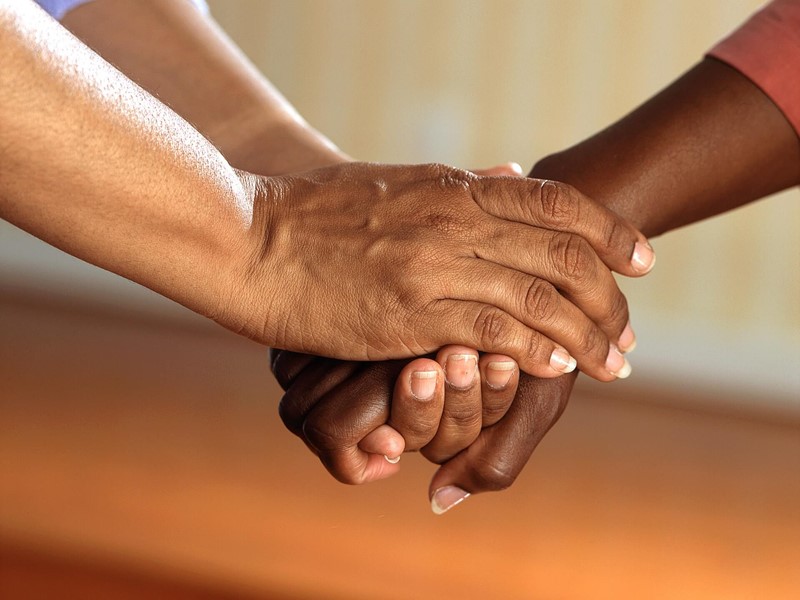Admission Line (866) 396-3655
Mental Health Disparities Among Minorities

If you’ve experienced mental illness while living in the U.S., you may have witnessed first-hand how difficult it can be to find high-quality, readily available treatment. You may have run into long waitlists to get an appointment with a therapist. You might have noticed misconceptions surrounding mental illness and what it means to deal with it.
You’re not alone. Mental health care has been historically neglected in the U.S., though efforts in recent years have made significant strides. Finding the proper care when and where you need it can still be challenging.
Those challenges increase if you’re a member of a minority group. Minority groups include racial and ethnic minorities, people with disabilities, and members of the LGBTQ+ community.
What Disparities Do Minorities Face in Mental Health Care?
A disparity refers to a barrier to care that disproportionately affects certain groups. Minority groups face more barriers to accessing mental health care. The social stigma around mental illness may be higher for them, and they may deal with discrimination in their search for care.
Acknowledging the disparities increases awareness of what minority groups go through and can help further the pursuit of solutions to close these gaps.
Racial and Ethnic Disparities in Mental Health Care
The population of the U.S. is becoming increasingly diverse. The census estimates that more than half of all Americans will belong to an ethnic group other than non-Hispanic White by 2044.
However, these ethnic groups continue to struggle in accessing mental health care. In 2015, 48% of Whites with mental illness received mental health services, according to the National Healthcare Quality and Disparities Report. Meanwhile, 31% of Black Americans and Hispanics received the same care, along with 22% of Asian Americans.
What creates this gap? Several factors are behind these disparities, including:
- Social stigma – Minority populations often experience a more substantial stigma surrounding mental illness and receiving care.
- Low awareness – Many communities still hold misconceptions about mental illness, including various minority groups. It may be dismissed as a character flaw or not acknowledged as real.
- Lack of diversity in providers – More than 80% of mental health care professionals are White. People of color may feel less safe sharing their struggles with someone from a different background.
- Lack of culturally competent care – Providers are typically not trained to treat patients from different backgrounds in a culturally sensitive way. Culturally incompetent care makes people of color less likely to see a White provider.
- Low income or lack of insurance – People in ethnic and racial minorities are more likely to live in low-income households or lack health insurance. Without insurance, mental health care can be costly. Low-income families or individuals often can’t afford to pay out of pocket for treatment.
- Language barriers – People who speak English as a second language have a more challenging time finding a provider who speaks their native language, which is often crucial to receiving adequate care.
- Distrust in the healthcare system – Many people of color have developed a suspicion of the healthcare system over time, with good reason. A lack of faith or sense of safety makes them less likely to attempt to access care for mental illness.
The factors that contribute to disparities in mental health for people from ethnic and racial minorities may seem overwhelming. The first step to solving these issues is understanding them. Once the discrepancies are recognized, professionals, advocates, and all individuals can work to resolve them.
Disparities in Mental Health Care for the LGBTQ+ Community
Members of the LGBTQ+ community also face obstacles in getting mental health care and treatment for mental illness. They share some barriers experienced by other minorities, but others are unique to their group.
People who identify as LGBTQ+ are more likely to:
- Experience mental illness – LGBTQ+ individuals are more than twice as likely to deal with mental illness in their lifetime than cisgender heterosexual people.
- Engage in heavy drinking – Women who identify as lesbian or bisexual are twice as likely to engage in heavy drinking as their heterosexual counterparts.
- Consider or attempt suicide – The rates of suicidal ideation and suicide itself are incredibly high in the LGBTQ+ community, especially among transgender people. 30.8% of transgender people consider attempting suicide, compared with 2.3% of cisgender heterosexuals.
- Face discrimination – Living in the U.S. can still be dangerous for LGBTQ+ individuals. Legislation continues to pass that discriminates against them. They may feel unsafe coming out or seeking mental health treatment related to their identity.
LGBTQ+ individuals may experience mental illness in connection with the day-to-day difficulties that arise from being who they are. They are more likely to be victims of violence and receive less social support, especially if they live in an area with negative views towards their identity.
However, they may encounter discrimination or stigma specific to their identity while seeking care. These risks make them less likely to pursue treatment in the first place.
How to Eliminate Mental Health Disparities Among Minorities
Identifying the disparities and their causes is only the first step toward finding solutions. Mapping out how disparities in care, stigma, etc., can be resolved is crucial in achieving equitable mental health care for all.
1. Raise Awareness
Raising awareness around mental illness and how it affects individuals is essential. If you don’t know how to recognize mental illness, it’s much easier to misconceive what’s happening to you or a loved one.
Raising awareness also helps defang the social stigma surrounding mental health issues. Many organizations are working towards this goal every day. National Minority Mental Health Awareness Month takes place during the month of July to further this effort.
2. Focus on Culturally Sensitive Care
The mental health field needs more professionals who come from minority populations. The greater the diversity of providers, the better access to care will be for everyone. More funding and scholarships can get people of color and members of the LGBTQ+ into programs to become mental health professionals.
Until the diversity of providers can increase, existing providers should have access to training that allows them to treat many different populations in a culturally sensitive manner. More education will improve care for all patients, not just minority ones.
3. Increase Funding and Research
The American Psychological Association (APA) recommends dedicating more funding to advocacy groups and agencies pursuing these goals.
They also recommend increasing research around intersectionality and how belonging to more than one minority group can affect your mental health and related care.
4. Share Your Story
Anyone can help destigmatize mental illness and close the gap for minority populations. Word of mouth is a powerful tool. If you’ve dealt with mental illness and feel comfortable sharing your story, it may help a loved one or someone in your community. Sharing on social media can show other people they aren’t alone.
Get the Support You Need
Everyone deserves mental health treatment that’s unique and appropriate to them. Our treatment philosophy at Jackson House is to customize your plan to meet your highly individualized needs.
If you’re struggling with mental illness or substance abuse, seek help. We’re here to support you on the road to recovery.
